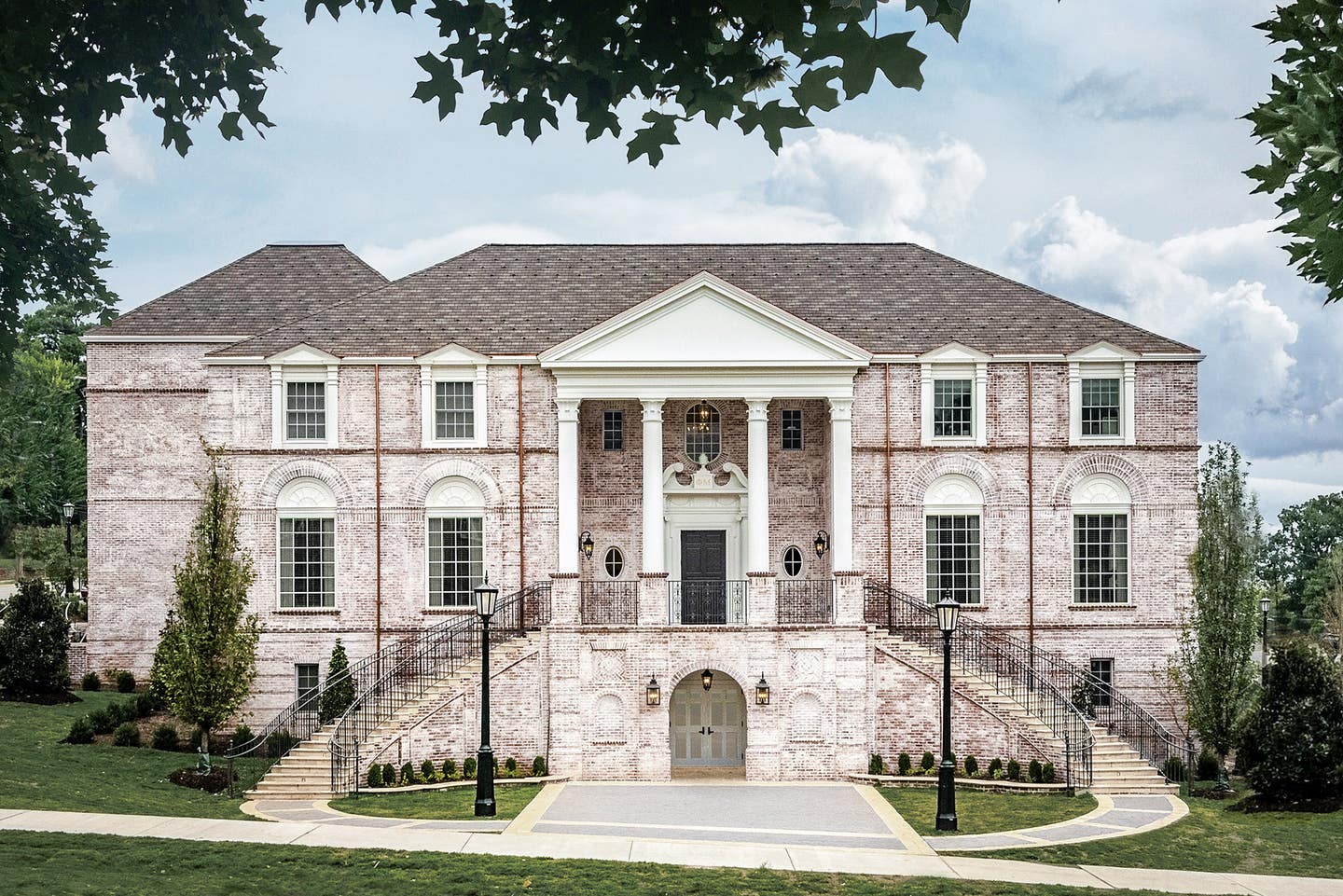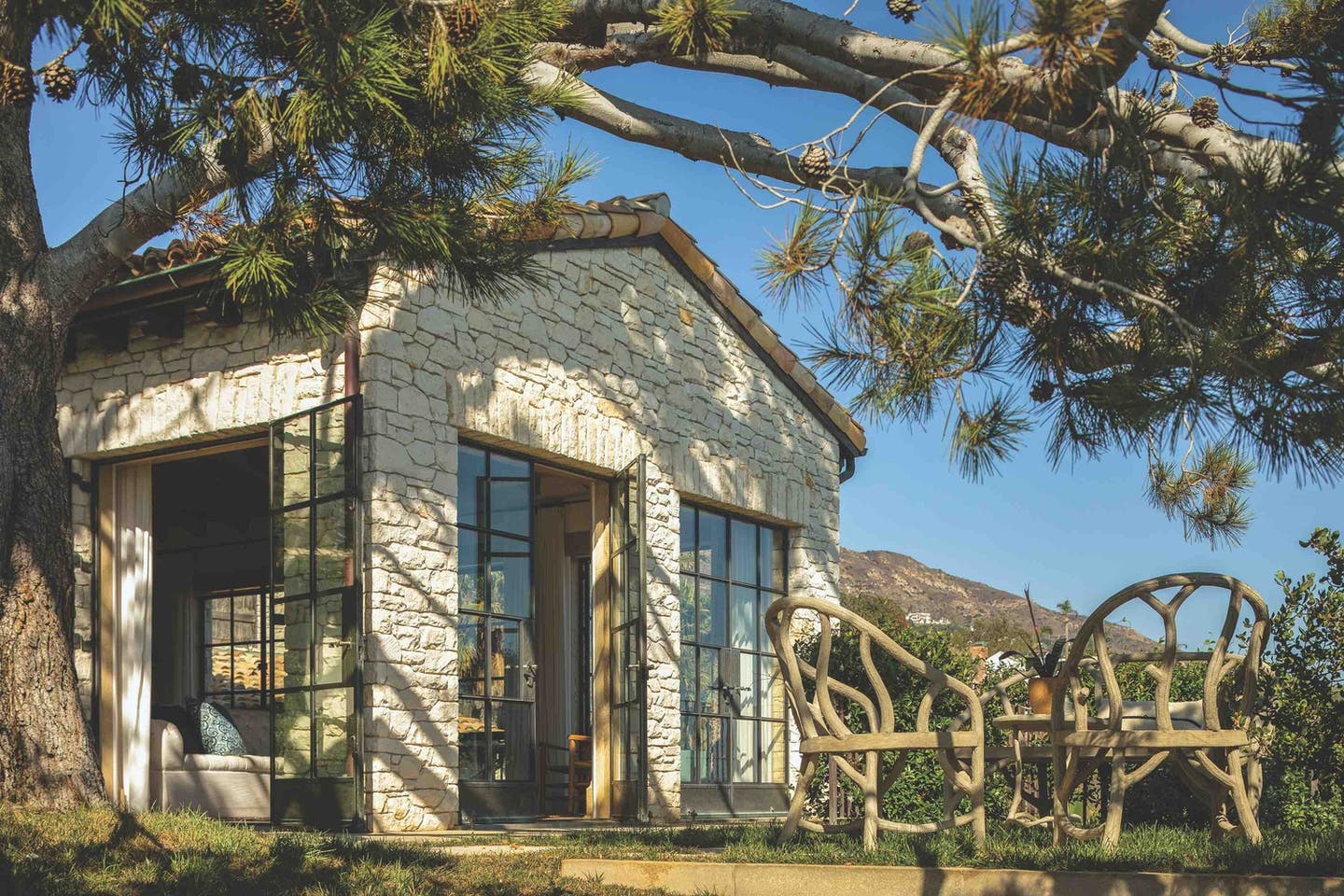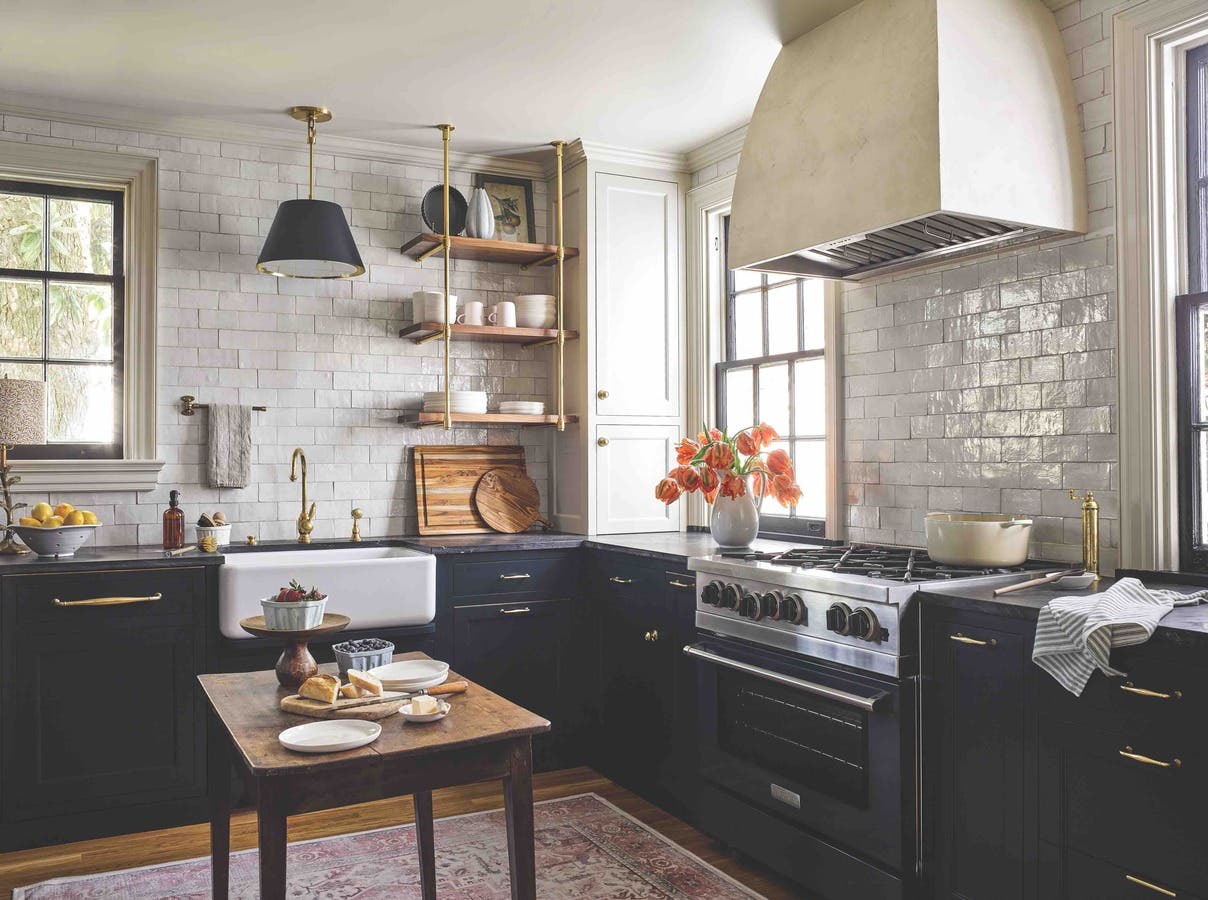
Projects
A New Sorority House by Michael G. Imber
Project Phi Mu House
Architect Michael G. Imber Architects
Architect of Record Core Architects
When The Faithful Sisters of Phi Mu, the second oldest female fraternity in America, decided to build a new sorority house on the University of Arkansas campus, they wanted to select a site and a style that would reflect their storied place in history.
“The goal of both parties—the university and the sorority—was to add a traditional building of lasting quality,” says architect Michael G. Imber, FAIA, whose eponymous firm is based in San Antonio, Texas. “Our design is one of southern precedents with English influences.”
Imber and his team, which included project manager Mac White and assistant project manager Jim Lenahan, designed a 30,800-square-foot classical building that references Georgian estates that inspired the architectural traditions of sorority houses and the work of the English architect Sir Edwin Lutyens and the Italian Renaissance architect Andrea Palladio.
“This was a new paradigm for the university,” Imber says. “The other sorority houses on campus are more builder-designed.”
The team chose the Corinthian and Ionic Orders not only to reflect the sorority’s Greek roots but also because they are seen as delicate, refined, and feminine—more than appropriate for the image
of a society of young women.
The three-level building, which is on a corner lot on a prime piece of property in fraternity row facing the university’s main gates, features sleeping quarters for 85 sorority members, a house director’s suite, a commercial kitchen, a dining room that seats 200, and a chapter room that seats 350.
“It was a complex program in terms of uses and functionality,” says Imber, adding that the building’s massing was broken down into “more intimately scaled elements in separate blocks” that look as though they were added over time, a design conceit that also allowed the more functional spaces to be tucked out of sight under the building’s main level.
The two-story entry portico, which is in a Palladian style, consists of a pediment, engaged corner pieces, and freestanding round Corinthian columns whose capitals originated in ancient Athens’ Tower of the Winds, which is considered the world’s first meteorological station.
Ionic columns, a swan-neck pediment, and a pineapple finial over the main entry door create a graceful and welcoming portal. “Again, we felt it was important to use a more feminine order here,” he says. “The Ionic Order is thin and graceful in proportion.”
The most dramatic feature of the façade is the sweeping horseshoe staircase, which is as much a product of necessity as it is of aesthetics.
This frames the lower-level brick entry loggia leading to the Chapter Room and is accessed via a “fornix” motif, a triumphal vaulted passage dating back to ancient Rome, which at Phi Mu is flanked by elliptical brick niches.
A striking design feature, the exterior staircase allows the sorority to gather all its members annually in front of their house in a graceful manner.
“The site slopes over 20 feet vertically, which was not an easy scenario,” Imber says. “But we decided to make lemons into lemonade. There was a major need for a place where all the girls could get together for a photo shoot; the multi-level staircase became a big stage set.”
The exterior is made of red brick from Acme Brick, a foundry in Fort Smith, Arkansas, that has been in production for more than a century.
“Our office has not had a lot of experience with brick, and we saw this an opportunity to celebrate and be expressive with the material,” Imber says. “We selected it for its hand-crafted qualities. It has a rougher surface than normal, and there’s an irregularity among the bricks so each is truly unique. We also used special brick shapes and traditional detailing.”
A mortar wash, applied by hand, created a white textured effect similar to that of the campus’ historic Carnall Hall, which is down the street, and provides a subtle reminder of the sorority’s signature colors—rose and white.
The interior layout and details of the Phi Mu house also are classical in approach. The entry foyer features honed marble floors in a checkerboard pattern of soft grey and white; Ionic columns and a denticulated entablature with Greek fretwork dentils.
A sweeping semi-circular stair soars to a vaulted second story, which is partially open to below, giving the space a light and airy feel.
The foyer is flanked by a formal living room and parlor that are defined by gracious windows, classical moldings, picture rails, and wainscoting.
The dining room, which is in the center of the house, offers easy access from all directions and spaces, including the commercial kitchen and weekend kitchen. It flows outdoors to the dining terrace, which provides views of the campus and space to locate mechanical equipment out of sight.
Interior and exterior details also relate to Phi Mu, which was established in 1852 to foster the lifetime development of women. The sorority’s signature motif, the quatrefoil, is represented in the façade’s brickwork, ceiling medallions, lighting fixtures, and a special staircase window.
Imber, whose team has received numerous kudos for the project, says the greatest compliment came from an unexpected source.
“When I walked by the Phi Mu Fraternity building after it was completed, I saw a group of students taking photos there,” he says. “They had no idea who I was, but they said, ‘Isn’t this building just off the hook?’ I told them I thought it certainly was. It was exciting connecting with a whole new generation.”
Key Suppliers
Design Architect Michael G. Imber Architects
Architect of Record Core Architects
Structural Engineering Bernhard
Civil Engineering/Landscape DCI
Excavation/Sitework Garrett Construction
Interior Design Harper Howey Interiors
General Contractor CDI Contractors
Masonry Tri Point Masonry
Millwork, Paneling Trim Trimco
Doors and Windows TMC Enterprises; Pella Windows
Excavation/Sitework Garret Construction
Landscaping Greenview Lawns, Second Nature Landscapes
Exterior Brick Acme Brick
South Portico Chadsworth Columns
Interior and Exterior Columns Pacific Columns
Plaster Lunettes Decorators Supply Corp.
Cast-Stone Pavers Peacock Pavers
Cast-Stone Treads Conway Precast
Iron Railings Julius Blum & Co.
Exterior Trim James Hardie
Interior Trim White River Hardwoods








